This article has multiple issues. Please help improve it or discuss these issues on the talk page . (Learn how and when to remove these template messages)
|
Baseball Tasmania is the governing body of baseball within Tasmania. [1]
This article has multiple issues. Please help improve it or discuss these issues on the talk page . (Learn how and when to remove these template messages)
|
Baseball Tasmania is the governing body of baseball within Tasmania. [1]

Tasmania is an island state of Australia. It is located 240 kilometres (150 miles) to the south of the Australian mainland, separated from it by the Bass Strait, with the archipelago containing the southernmost point of the country. The state encompasses the main island of Tasmania, the 26th-largest island in the world, and the surrounding 1000 islands. It is Australia's least populous state, with 569,825 residents as of December 2021. The state capital and largest city is Hobart, with around 40 percent of the population living in the Greater Hobart area. Tasmania is the most decentralised state in Australia, with the lowest proportion of it residents living within its capital city.

Lake Gordon is a man-made reservoir created by the Gordon Dam, located on the upper reaches of the Gordon River in the south-west region of Tasmania, Australia.

In Australia, baseball is a game that is played in all states and territories of the country.
Australia won the 1930 Ashes series against England, winning two of the matches and losing one, with the other two tests drawn. The Australian tourists were captained by Bill Woodfull, while the home side were led by Percy Chapman, who was dropped in favour of Bob Wyatt in the final Test.

Eddystone is a tower-shaped rock or small island, located in the Southern Ocean, off the southern coast of Tasmania, Australia. The island is situated approximately 27 km (17 mi) from the South East Cape on a bearing of 149° and is contained within the Southwest National Park, part of the Tasmanian Wilderness World Heritage Site. An erosional remnant of the Tasmanian mainland with an elevation of 30 m (98 ft) above sea level, the island is estimated to have separated from the Tasmanian mainland at least 15,000 years ago.
Thomas Bather Moore was a pioneer explorer of Western and South West, Tasmania, Australia.

Prince of Wales Bay is located on the western shore of the River Derwent in southern Tasmania, Australia.

Kingborough Lions United Football Club is a semi-professional association football club based in Kingston, Tasmania. Founded in 1998, the club currently competes many leagues including in the NPL Tasmania and the Women's Super League. The club has a large playing group ranging and teams range from juniors, youth academy, and social teams through to high performance men and women's programs.
Chris Duval is a former Australian cricketer, who played for South Australia and Tasmania. He was a fast bowler who generated enough pace to have interested scouts from American baseball outfit Los Angeles Dodgers. Duval transferred to Tasmania from South Australia in 2006 in an effort to boost the fast-bowling attack following a series of injuries. He later transferred back to South Australia where he became a regular player until he was dropped after the 2010–11 season.
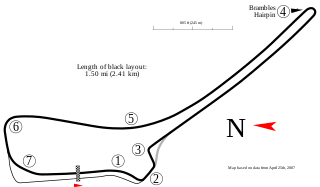
Symmons Plains Raceway is a motor racing circuit in Australia, located about 30 km (19 mi) south of Launceston, Tasmania. Since the closure of the Longford circuit in the 1960s it has been Tasmania's premier motor racing facility. The circuit is one of the longest serving circuits of the combined history of the Australian Touring Car Championship and the V8 Supercar Championship Series. Since 2005 it has hosted the Falken Tasmania Challenge for V8 Supercars.
Sport in Tasmania is participation in and attendance at organised sports events in the state of Tasmania in Australia.
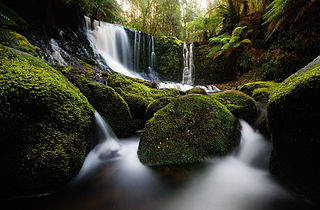
The Horseshoe Falls, a tiered–cascade waterfall, is located in Mount Field National Park, Tasmania, Australia.
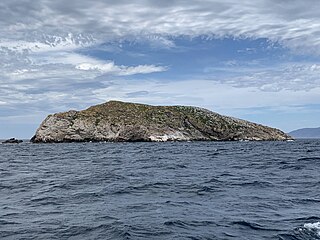
Ile des Phoques is a rugged granite island, with an area of 8 ha, part of the Schouten Island Group, lying close to the eastern coast of Tasmania, Australia near the Freycinet Peninsula.

The Wedge Island, part of the Tasman Island Group, is an island with an area of 43 hectares lying close to the south-eastern coast of Tasmania, Australia. The island is located in Storm Bay, situated off the Tasman Peninsula.
Green Island is a small island nature reserve with an area of 4.17 ha close to the south-eastern coast of Tasmania, Australia, at the entrance to the River Derwent.

The Lady Barron Falls, a tiered–cascade waterfall on the Lady Barron Creek, is located in the Central Highlands region of Tasmania, Australia.
The Faith Island, part of Partridge Island Group, is a low, flat islet in south-eastern Tasmania, Australia. The islet lies in the D'Entrecasteaux Channel between Bruny Island and the Tasmania mainland. It contains two gravestones, concealed in the scrub in the north-east of the island. Its neighbouring islets are named Charity and Hope and also the Arch Rock.
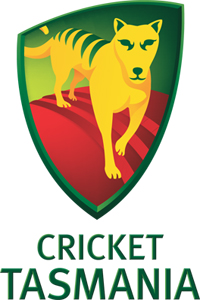
Cricket Tasmania is the administrative body for cricket in Tasmania, Australia, and they are based at Bellerive Oval.
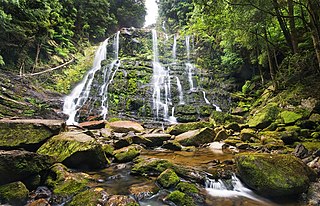
The Nelson Falls, a cascade waterfall, is located in the UNESCO World Heritage–listed Tasmanian Wilderness, in the West Coast region of Tasmania, Australia.
The John Butters Power Station is a conventional hydroelectric power station located in Western Tasmania, Australia. The power station forms part of the King – Yolande River Power Scheme and is owned and operated by Hydro Tasmania.